Are you tired of the constant hum of air conditioning, the dry air, and the hefty electricity bills that come with it? If so, you’re not alone. Many people are seeking alternatives to the artificial coolness of AC, opting instead for a more natural, sweat-free lifestyle. In this article, we’ll explore the top destinations in the USA where you can embrace AC-free living and enjoy the benefits of fresh air, moderate temperatures, and a closer connection to nature.
From coastal breezes to mountain escapes, the United States offers diverse climates that are favorable for living comfortably without relying on air conditioning. Whether you prefer the mild temperatures of the Pacific Northwest, the oceanic air of the Northeast, or the dry heat of the Southwest, there’s a destination suited to your preferences for a sweat-free lifestyle.
Join us as we discover the best cities and towns nationwide where you can trade in your AC unit for open windows, ceiling fans, and outdoor adventures. Say goodbye to the artificial chill and hello to a more sustainable, eco-friendly way of staying cool all year round.
U.S metros with the most homes that lack air conditioning
Although most Americans rely on air conditioning for cooling, according to data from the U.S. Census Bureau, approximately 9% of US households do not have AC. Let’s see which metro areas have the most households without air conditioning.
1. Seattle-Tacoma-Bellevue, WA
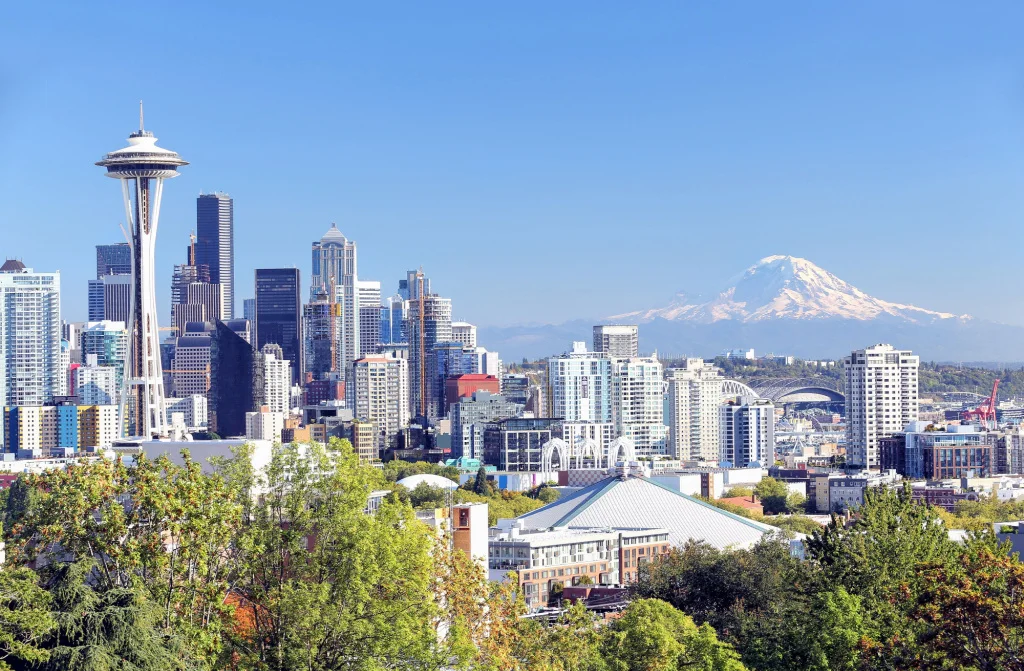
- Percentage of households without AC: 55.7%
Seattle-Tacoma-Bellevue, located in the heart of the Pacific Northwest, is renowned for its breathtaking natural beauty, vibrant culture, and progressive spirit. While many metropolitan areas in the United States swelter under the oppressive summer heat, residents of this region enjoy a unique luxury: the ability to thrive without the need for air conditioning.
Seattle-Tacoma-Bellevue benefits from its temperate maritime climate, unlike cities in the scorching deserts or humid subtropical climates. Thanks to the moderating influence of the Pacific Ocean and the Cascade Range, summers here are remarkably mild, with average temperatures rarely exceeding the mid-70s° (around 24°C). This natural air conditioning contrasts with the sweltering conditions experienced in other parts of the country.
Seattle metro area has long been at the forefront of environmental sustainability initiatives. By reducing dependence on air conditioning, residents contribute to lower energy consumption and greenhouse gas emissions, aligning with the region’s commitment to combating climate change. While the region typically enjoys mild summers, occasional heatwaves do occur. In response, local authorities and community organizations have implemented measures to ensure public safety and comfort during periods of extreme heat.
If you’re considering relocating to this refreshing area, the real estate agents in Seattle, WA, will be happy to help you find your AC-free dream home. Don’t hesitate to reach out to them.
2. San Francisco-Oakland-Berkeley, CA
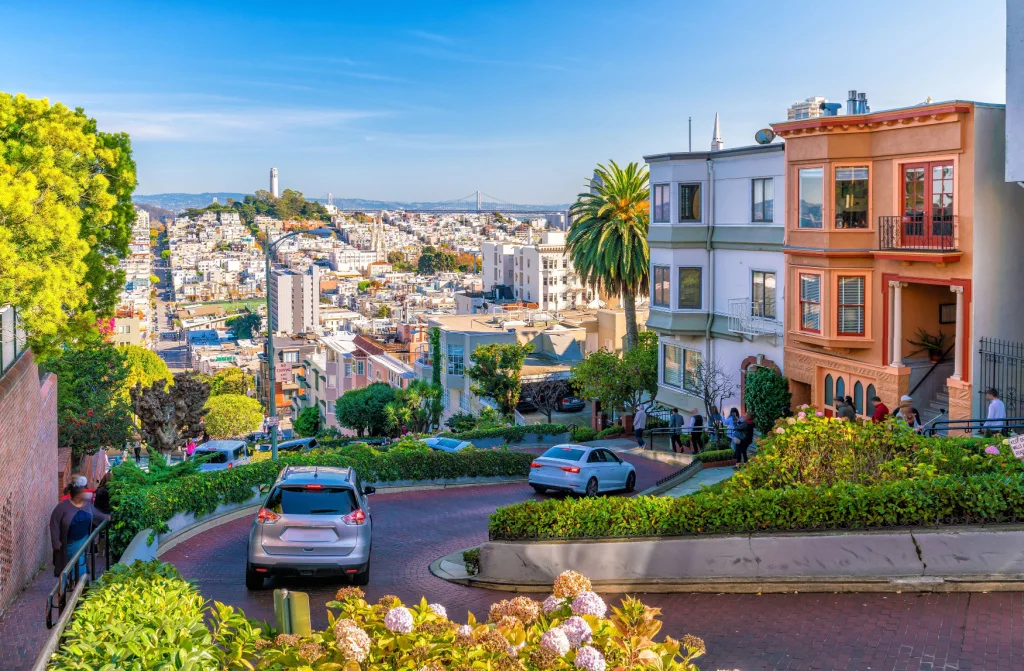
- Percentage of households without AC: 52.7%
With its mild Mediterranean climate, where summers are often marked by cool breezes and fog rolling in from the Pacific Ocean, it’s easy to understand why air conditioning isn’t necessary for many San Francisco Bay Area residents. The region enjoys average summer temperatures ranging from the mid-60s°F to the low 70s°F, a stark contrast to the scorching heatwaves that plague other parts of the country.
Even in winter months, when much of the country is bundled up against freezing temperatures, the Bay Area remains relatively mild. While occasional rain showers may occur, snow is a rarity in San Francisco, and frost is virtually unheard of in the city. This temperate climate allows residents to enjoy outdoor pursuits year-round, whether hiking in the nearby hills or picking in one of the region’s many parks.
3. Portland-Vancouver-Hillsboro, OR-WA
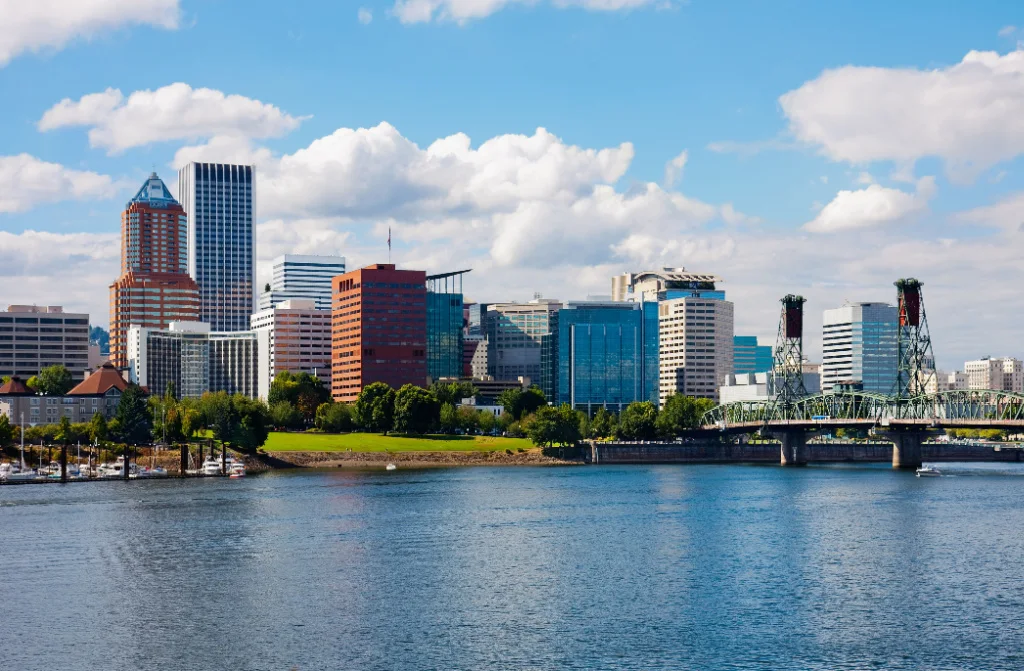
- Percentage of households without AC: 21.4%
The Portland-Vancouver-Hillsboro metro area enjoys a temperate climate with mild summers and cool winters. Thanks to its proximity to the Pacific Ocean and the Cascade Range, the region experiences maritime influences that help regulate temperatures year-round. Summer highs typically range from the 70s°F to low 80s°F, offering residents comfortable conditions without the need for extensive cooling systems.
Nature is abundant in the Portland-Vancouver-Hillsboro area, with parks, forests, and greenery woven throughout the urban landscape. This natural canopy provides shade and helps lower ambient temperatures, especially in densely populated areas. Residents can enjoy outdoor activities in parks like Forest Park or explore the scenic beauty of the Columbia River Gorge, all while staying cool under the shelter of towering trees.
4. Los Angeles-Long Beach-Anaheim, CA
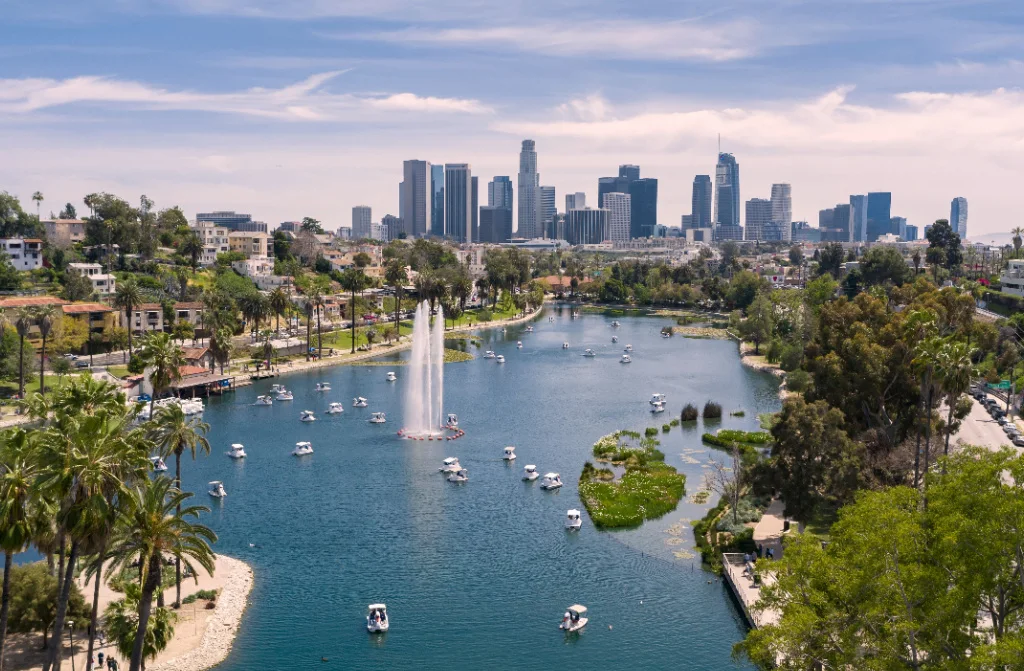
- Percentage of households without AC: 19.1%
Los Angeles-Long Beach-Anaheim, California, is renowned for its sunny skies, picturesque beaches, and vibrant culture. However, what may surprise many is that this bustling metropolitan area is one of the few in the United States where air conditioning is more of a luxury than a necessity. Embracing a unique blend of coastal breezes, moderate temperatures, and innovative architectural designs, this region showcases how sustainable living can coexist with urban comfort.
Los Angeles-Long Beach-Anaheim’s moderate climate is due to its geographical location and proximity to the Pacific Ocean. While temperatures can rise during the summer, they rarely reach the scorching highs experienced in other parts of the country. The Pacific Ocean acts as a natural air conditioner, providing a cooling effect that moderates the heat and humidity.
Furthermore, this coastal area benefits from the phenomenon known as the “marine layer,” a blanket of cool, moist air that often envelops coastal areas in the early morning hours. This natural cooling mechanism helps maintain comfortable temperatures, even during the height of summer.
But it’s not just nature’s influence that keeps the need for air conditioning at bay in Los Angeles-Long Beach-Anaheim. The metro area has embraced sustainable building practices and innovative architectural designs, prioritizing energy efficiency and natural ventilation.
5. Denver-Aurora-Lakewood, CO

- Percentage of households without AC: 14.7%
Denver enjoys a unique geographic advantage, situated at an elevation of approximately 5,280 feet (hence the nickname “The Mile-High City”). The higher elevation results in cooler temperatures, with summer highs often reaching comfortable levels. Unlike many other U.S. cities where oppressive heatwaves dominate the summer, Denver’s climate offers respite, with daytime highs typically ranging from the mid-70s°F- to 90s°F.
Denver’s semi-arid climate ensures that while daytime temperatures may rise, the humidity remains low, making the heat more bearable. Additionally, evenings dramatically drop in temperature, allowing residents to naturally cool their homes by opening windows and letting in the refreshing mountain air. This natural ventilation system and the region’s generally mild summers render air conditioning largely unnecessary for many Denverites.
6. Cleveland-Elyria, OH
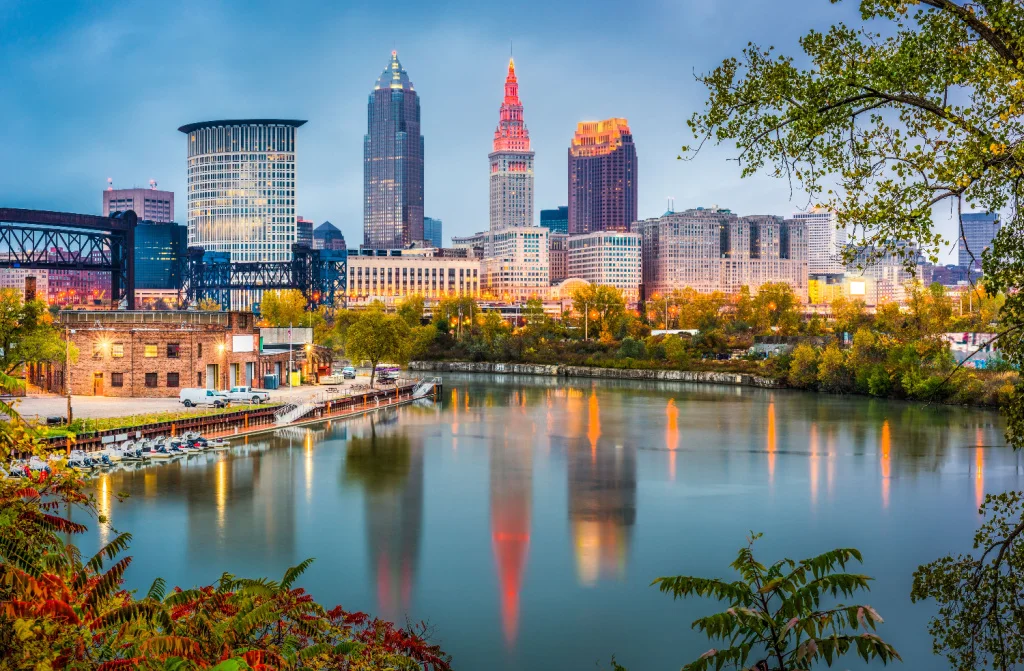
- Percentage of households without AC: 9.2%
Located along the southern shore of Lake Erie, Cleveland-Elyria enjoys the moderating effects of one of North America’s largest freshwater bodies. The lake’s vast surface area is a natural air conditioner, cooling the surrounding land during hot summers. Cool breezes off the lake provide relief from high temperatures, reducing the need for air conditioning in homes and businesses.
The metro area boasts an impressive array of parks, forests, and green corridors. Cleveland’s Emerald Necklace, a chain of interconnected parks and reservations, offers residents ample opportunities to escape the heat in shaded areas and enjoy outdoor activities in a natural setting. These green spaces provide cooling benefits and contribute to improved air quality and overall well-being.
7. Boston-Cambridge-Newton, MA-NH
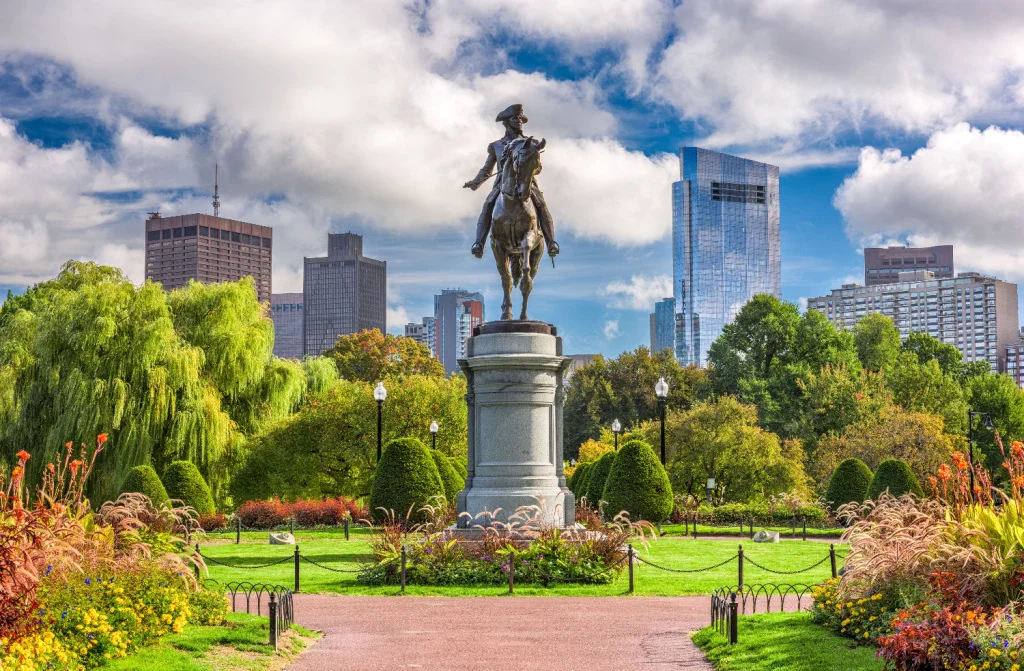
- Percentage of households without AC: 8.9%
Boston – Cambridge – Newton’s moderate climate is deeply rooted in its location. Situated in the northeastern part of the United States, the region benefits from the tempering influence of the Atlantic Ocean. The ocean acts as a natural air conditioner, regulating temperatures year-round and providing relief from extreme heat during the summer months.
One of the defining features of Boston – Cambridge – Newton’s climate is the prevalence of refreshing ocean breezes. These breezes flow inland from the nearby coast and help dissipate heat and maintain comfortable temperatures, even on the hottest days. As a result, residents often find themselves enjoying cool, refreshing air without the need for artificial cooling systems.
Another factor contributing to the region’s natural coolness is its abundant green spaces and thoughtful urban planning. Parks, gardens, and tree-lined streets provide shade and help mitigate the urban heat island effect, making cities feel significantly warmer than surrounding rural areas. Additionally, strategic city planning has ensured ample ventilation and airflow throughout the metro area, further enhancing its natural cooling capabilities.
Author’s conclusion
In wrapping up, this journey through AC-free living across the USA has shown how we can escape the constant drone of air conditioning and embrace a more natural, sustainable lifestyle. From the breezy coasts of Seattle and San Francisco to the mountain coolness of Denver, there’s a place for everyone to enjoy sweat-free living.
It’s not just about saving on electricity bills – it’s about feeling connected to nature and enjoying the simple pleasure of open windows and fresh air. Whether strolling through a park in Boston or hiking in Portland, these cities offer a refreshing break from the artificial chill of AC.
So, if you’re tired of the hum of your AC unit and craving a change, why not consider one of these AC-free havens? You’ll reduce your carbon footprint and discover a healthier, more comfortable way of living that’s in tune with the world around us.











